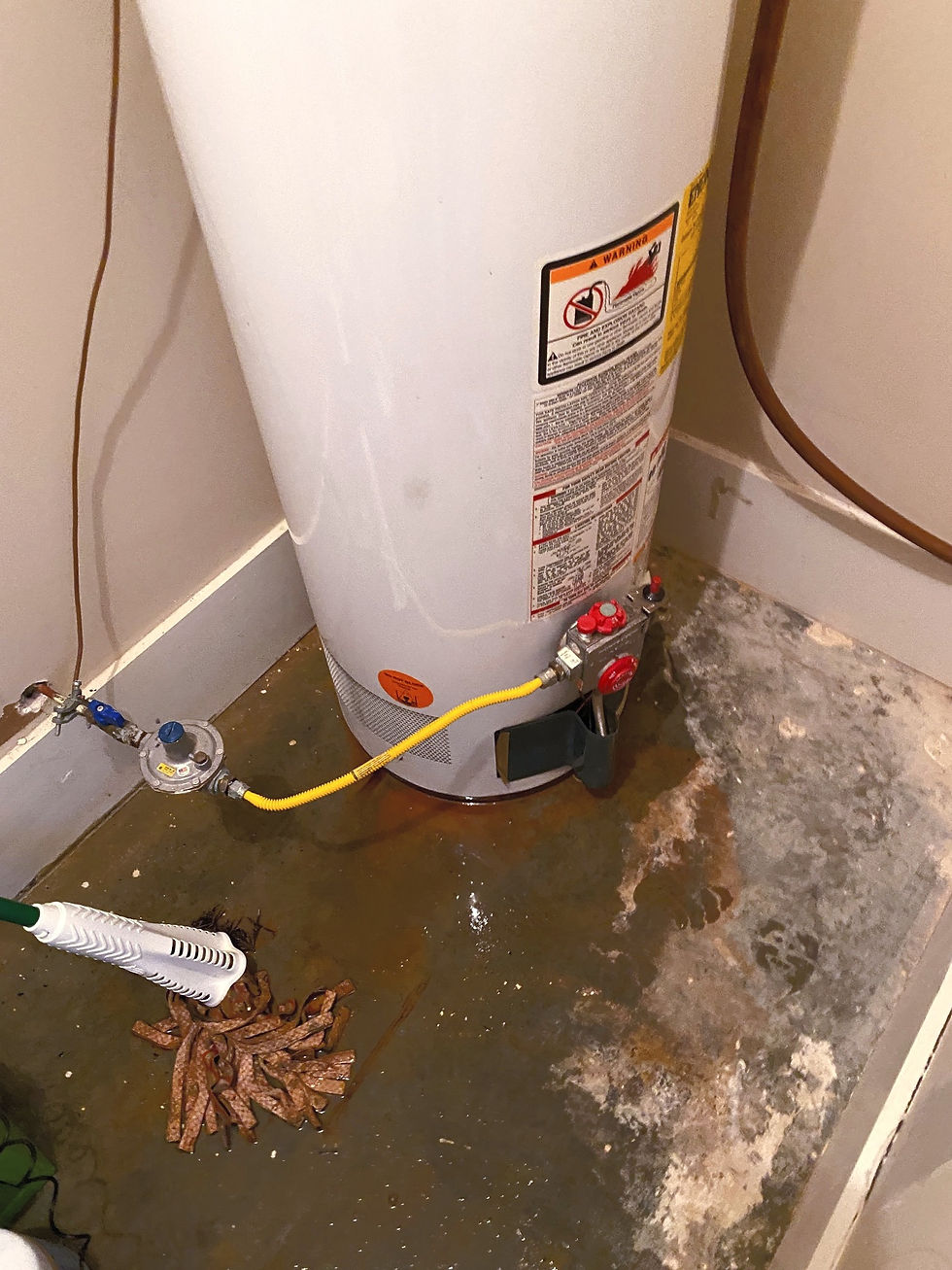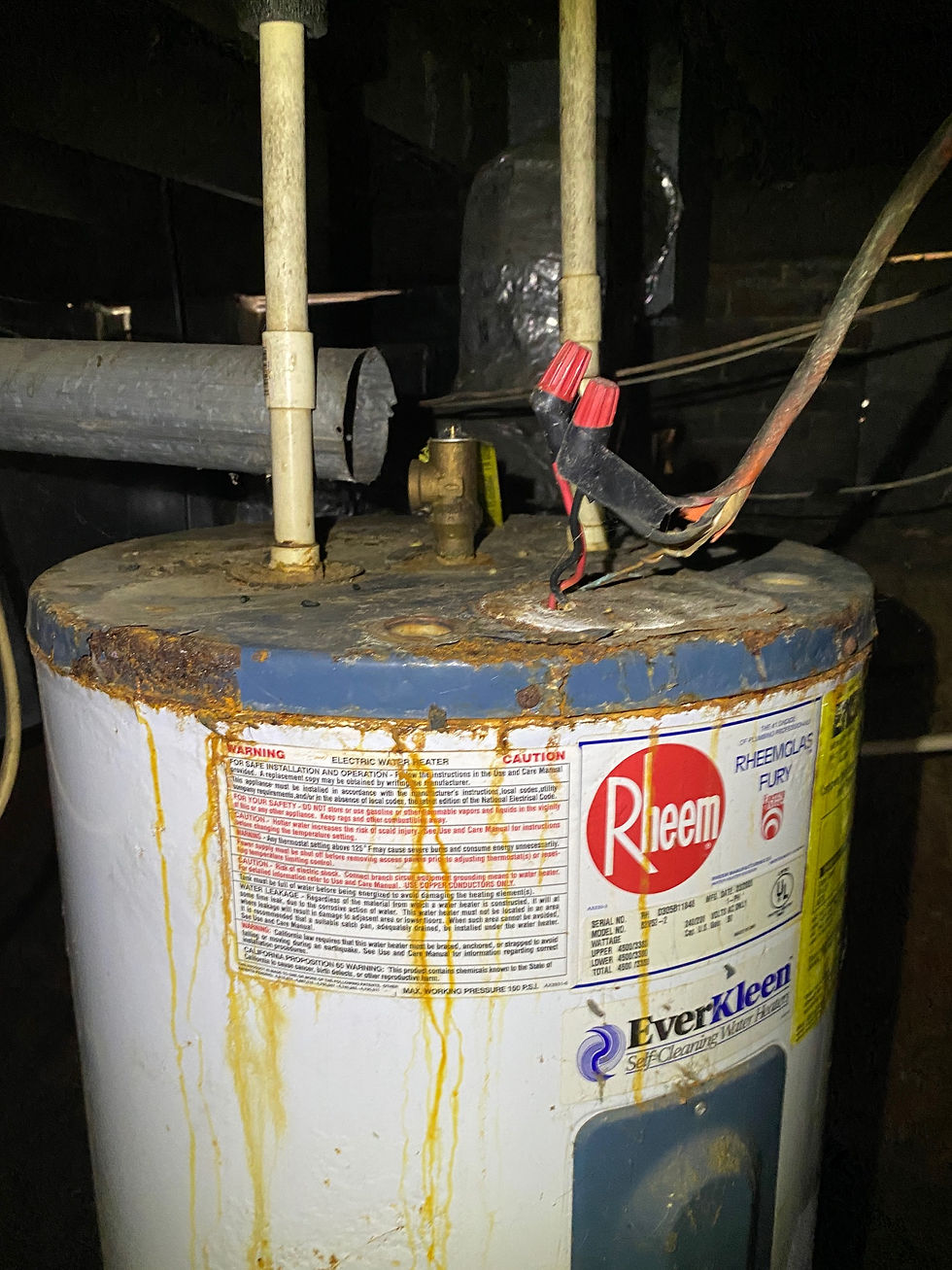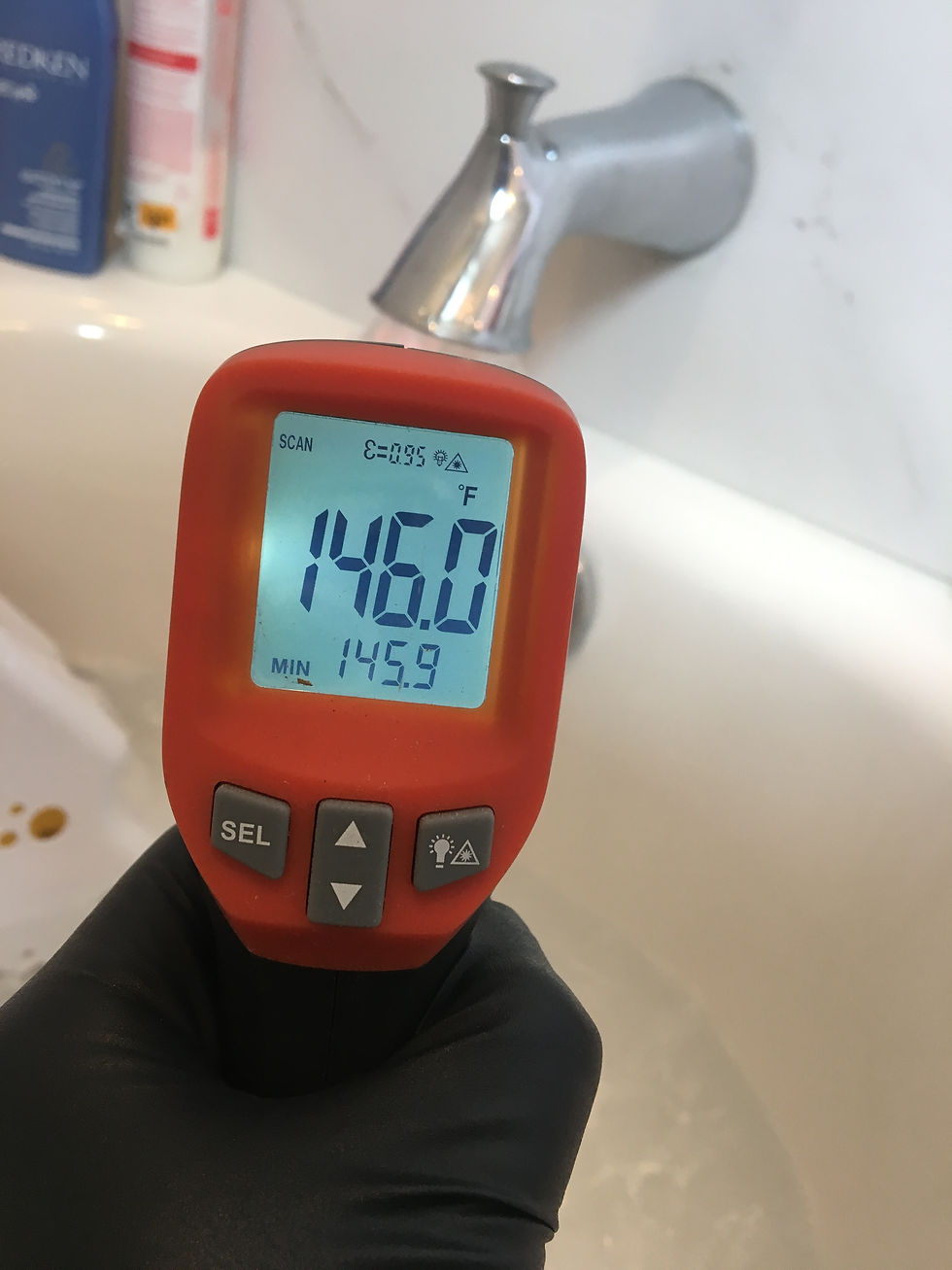Tuscaloosa, AL
(All photos are from real home inspections performed by Risley Home Inspections)

Things to look for when inspecting water heaters:
Any leaking
Rust or corrosion
Gas line, drip leg, wiring, or nearby disconnect
Catch pan & drain line
Temperature pressure relief valve and discharge pipe
Age of water heater
Venting conditions (if gas water heater)
Location
Expansion tank
Anode rod
Shut off valve
Temperature setting

Ideally, it is wise to replace your water heater before it fails. If your water heater looks like this one, it is time for a new water heater. This water heater was located in the crawlspace, where issues can go on unnoticed and cause other damage to the home. If you do not feel confident in looking for potential issues with your appliances or home, a home maintenance inspection can be beneficial. To keep your home in good shape and prevent potential issues.

Data plate information
By looking at the data plate on the water heater tank, you can determine the size and age of the unit. The example to the left made it easy with the manufactured date provided. That is not always the case. Most older water heaters age will have to be determined by the serial number. Typically the month and year is in the first 4 letters or numbers, but that can vary between brands of water heaters. I use www.building-center.gov , a website that shows you how to determine the age from the serial number.
Galvanic Corrosion
Also called "dissimilar metal corrosion", galvanic corrosion can occur when water passes through two dissimilar metals-such as copper and stainless steel-creating corrosion and eventually causing leaks. This can be avoided by installed "dielectric unions" at the water lines joints. The unions separate the two metals from being in contact with each other and preventing the corrosive reaction.
Ventilation of gas water heaters
Gas water heaters require a flue pipe or vent. A double-wall B vent is recommended and should have a clearance away from combustible materials of at least 1" (inch) to prevent potential fire hazards or overheating. Older units typically have original single wall vent pipes which are thinner and require a minimum clearance of 6" inches. There should also be a properly installed draft hood on top of the water heater. If you notice any white deposits or corrosion on the vent, it can be an indication that the unit is not venting properly, causing condensation. This can lead to pin holes leaks that can allow carbon monoxide to be released into the home, posing health and safety hazards. Gas appliances are required to always be vented to the exterior of the home.

Water heater components
Starting with the gas line and gas control valve - This gas line does not have a "drip leg" or "sediment trap" installed. A drip leg should be installed after the gas shut off valve to prevent sediment, debris, and moisture from entering a gas appliance or fuel regulator.

The thermostat can be found on the gas control valve for gas water heaters. For electric water heaters, there are 2 panel covers to remove for the upper and lower heating elements thermostats. You should turn your thermostat(s) down lower to improve efficiency and prevent potential scolding hazards. Water temperatures over 120 degrees can scold the skin within seconds.
Any time your water heater is installed over finished finished flooring, in the attic, or near finished building materials, it should have a catch pan installed with a secondary drain. In the case your water heater fails, the catch pan and drain will hopefully prevent water damage to the home.
Temperature pressure relief valve
The temperature pressure relief valve or TPR valve is meant to discharge if the pressure in the water heater reaches 150 psi or temperature reaches 210 degrees fahrenheit. Without the TPR valve, your water heater could be considered a bomb. The valve should have a discharge pipe to prevent scolding if person's happen to be nearby if valve discharges. The discharge pipe should terminate outside or other approved locations no more than 6"(inches) off ground/floor, should not be threaded at the bottom, have negative slope to drain properly, and be made of a material rated for high temperatures. Discharge pipes should not be terminated into the crawlspace - as seen in the middle photo - because it would go unnoticed if valve is discharging or not and create potential moisture issues in crawlspace.
Other info:
Electric water heaters need to have the electrical disconnect in sight of unit for maintenance or in case of emergencies. All water heaters should have shut off valves installed on cold water inlet pipe, and units should be readily accessible for maintenance or to see visible issues. Expansion tanks should also be installed. The expansion tank provides space for the water to expand as it is heated and assists in keeping the water pressure in the normal pressure range while the water heater is operating. Water heaters also have a "sacrificial anode rod"- typically magnesium or aluminum. Water heaters have a constant supply of fresh water with lots of corrosion-causing oxygen, fresh water supplied to the water heater tank will attack the anode rod before it corrodes the tank to prolong life of water heater. To prolong the life of the water heater, it is recommend to replace this anode rod at least once a year. Another maintenance tip to prolong the life of your water heater and increase efficiency is to drain it once or twice a year. Sediments naturally build up inside the water heater tank, making your water heater work harder. If you ever hear popping and knocking inside the tank, it is time to drain it. All you need to do is hook up a hose to the drain valve-located at the bottom of the tank-and drain it to the exterior or an approved location.



















Comments